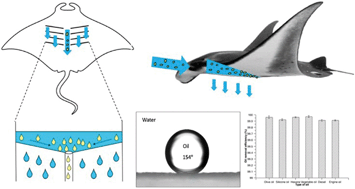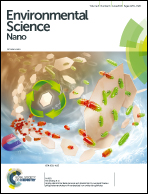Manta ray gill inspired radially distributed nanofibrous membrane for efficient and continuous oil–water separation†
Abstract
Suspension-feeding animals such as manta rays can separate water and food particles quickly and continuously through their special structured gill rakers via crossflow filtration. Inspired by this ecosystem engineering from nature, a facile membrane based set-up for oil–water separation mimicking the manta ray gill rakers was proposed in this paper. This crossflow process was fabricated using an aligned electrospun nanofibrous silk fibroin membrane. In this process, as the oil–water mixture travels in a parallel manner across the membrane surface, water permeated through the membrane while oil was rejected by the membrane and collected in the middle pipe. Compared to traditional super-hydrophilic membrane separation conducted by a gravity-driven dead-end approach, this method can avoid fouling issues and function continuously. Therefore, this nature-inspired method creates new opportunities for efficient oil–water separation. As an environmentally friendly material, silk fibroin is naturally super-hydrophilic which demonstrated its potential in water treatment.



 Please wait while we load your content...
Please wait while we load your content...